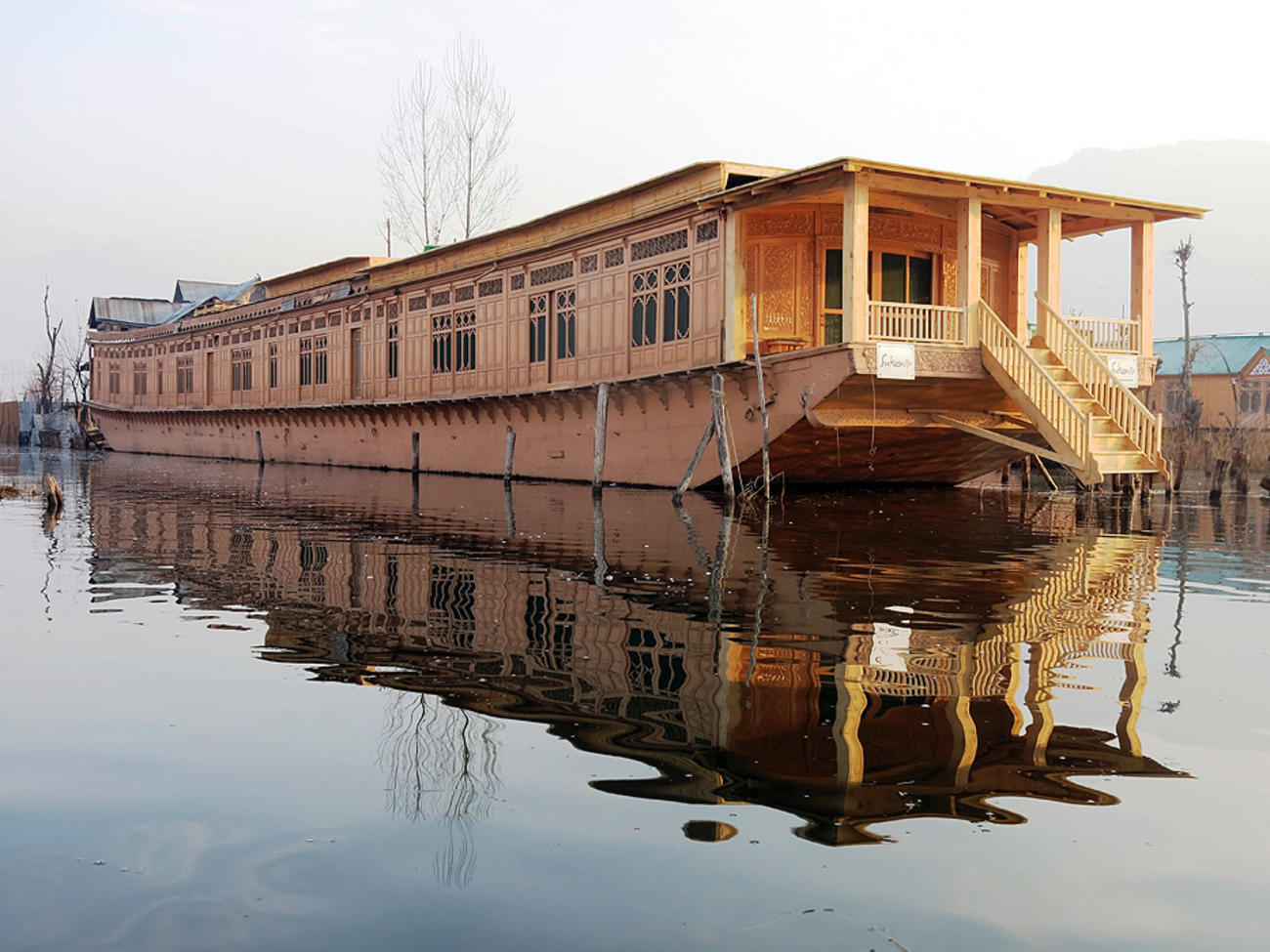The history of houseboats
The houseboats of Kashmir have an interesting history. When the British ceded control of Kashmir to a local ruler after the Sikh wars, they were banned from building properties in the area. This was a problem, because Kashmir had long represented a wonderful escape from the heat and dust of the Indian plains, and a place to relax and indulge in hunting, fishing and walking. To get around this, the British started building houseboats on the lakes and rivers, most notably on Dal Lake.

Old world charm
The houseboats themselves are made of local cedar pine, often intricately carved and beautiful to look at. They vary in size, from cute one-bedroom houseboats to elaborate 8-bedroom houseboats. Kashmiri houseboats, unlike the ones in Kerala, do not move, they are moored around the lake and plugged in to the local plumbing and electricity. A typical houseboat consists of a front porch where you can sit and watch the shikaras (gondola-like taxis) paddle slowly by, a living room - often decorated in an old world style, leading through to a dining room and from there a corridor off which the bedrooms are situated. Going up a flight of stairs many of the houseboats have a roof terrace where one can enjoy the beautiful Kashmiri sun. The level of luxury varies radically, from some very down at heel houseboats (the odd one literally sinking into the lake) to some new incredibly luxurious ones, the most stunning of which is the Sukoon (below).

A typical day on a houseboat
A typical day would start with breakfast in the dining room consisting of eggs, Kashmiri bread, honey, yoghurt and other delicious local produce. After breakfast you would take a shikara to the jetty, where you would be met by a private guide and driver, for a tour of the Shalamar Gardens and Srinagar Old Town (below), exploring the mosques and markets. Late morning you would return to the houseboat for lunch, followed by a relaxing early afternoon involving reading or maybe a siesta. In the late afternoon you could either enjoy sundowners on the top deck, or take a shikara ride around the lake. Dinner would consist of typical Indian fare, perhaps a rogan josh.

How long should I stay on a houseboat?
The minimum stay required is three nights, which is probably enough to unwind and get a feel for the place, but backpackers on the hippie trail would often stay for a month at a time in this nirvana, and it’s not hard to see why. A stay on a houseboat offers a wonderful place to relax as you quickly become attuned to the slow pace of life, enjoying the peace and quiet, reading, sightseeing or just watching the life on the lake.

Houseboats in Focus: The Sukoon
The Sukoon was Kashmir’s first luxury houseboat, and still sets the standard when it comes to luxury. Situated on the furthermost and quietest part of Dal Lake, it has five en-suite rooms with double beds, a desk and well-appointed bathroom with shower. It also has a living room to relax in, a dining room, and best of all a sundeck where you can take your meals, sunbathe or just take in the view with a drink. The staff are incredibly attentive, and you feel at home the moment you set foot on deck.

Watch our video guide to the Sukoon below:
The Royal Houseboats
There are seven houseboats in the Royal Group, varying in size from two-bedroomed Pigeon to the seven-bedroomed Shalamar. They are intricately carved, usually en-suite and like the Sukoon offer superb service. We generally use the 7-bedroomed Crystal Palace houseboat on our group tours, or the smaller houseboats for tailor-made travellers.
View our holidays to Kashmir
